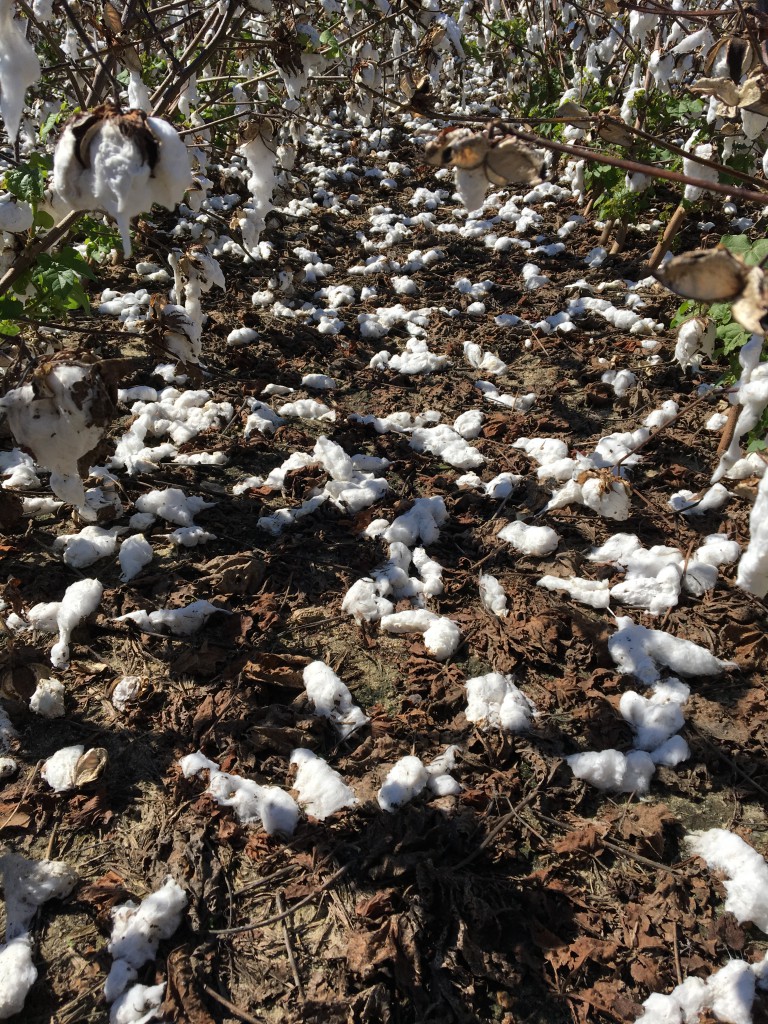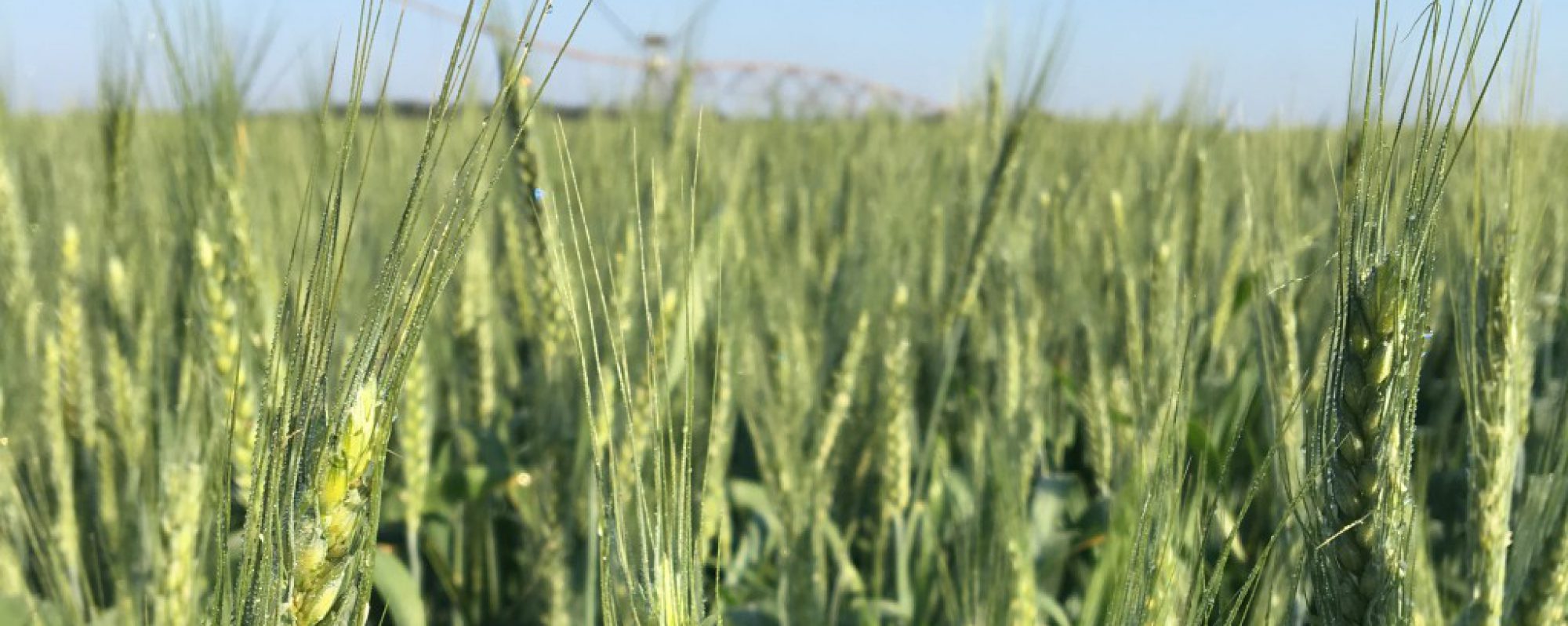It’s been three weeks since the storm came through Wilcox County. The eye of the hurricane went right above Pineview which put Wilcox right in the devastating path. Over 90 mph winds were reported in Rebecca, and the storm remained Category 1 as it passed our way. Our county was so fortunate to not have a lot of structural damage. Many said it is as if all the trees feel away from the homes. Many were out of power through Sunday. By Monday most people had power.
The damage to our ag commodities was obvious following the storm. The bad thing is that with these kinds of storms, it takes time to realize the true effects. It’s particularly more difficult in that we were so close to harvest for our pecans and cotton. Nuts were done filling and some were already on the ground. This means the branches of pecans were very heavy and susceptible to breaking. Cotton has a wide range of growth stages that are affected differently.
Pecans
Some of the most obvious damage is to our pecans. In Wilcox, we have around 2K acres. Driving around everyone sees the large, old trees that were completed downed by the hurricane. Generally, winds down 7 – 10 – 15-year-old trees due to unestablished root systems. To see so many of these large trees down represents the winds. This makes orchard clean up even more difficult. How much can be harvested depends on the damage. You also lose pecans that were still attached to the trees (and shucks) since they were not totally finished. Wilcox had atleast 20% trees down. The only trees no affected were young, recently planted trees. We have lots of these in the county. An equal hit to the pecan industry is the future loss of production from old, mature trees. UGA Extension Pecan Specialist Dr. Lenny Wells and the Pecan Commission have worked hard to compiled an estimated loss to the pecan industry in GA. Here is what Lenny had to say from his blog:
We currently estimate a loss of 27,455 acres of pecan trees, which translates to a loss of approximately 17% of Georgia’s pecan acreage. The total number of trees lost is estimated at 741,285 trees.
We also estimate the value of loss to the current crop of Georgia pecans at $100 million. The tree loss is valued at $260 million and the loss of future income is valued at $200 million. This results in a total loss of $560 million to the Georgia pecan industry from hurricane Michael.


Cotton
The next most damage is to our cotton crop. Since we have a wide range of planting dates, we are seeing that cotton already defoliated and ready to pick was more severely damaged. Strong winds essentially picked cotton off the stalk or blew it to the ground. As you drive by you see white cotton through the field, but when you walk through the field you see it on the ground. The wind has wrapped it up in the stalk of our earliest planted cotton. For our late planted cotton, we see many fields at atleast some degree of lodging. In my experience with 2 previous hurricanes, these situations do not end up as bad as they initially look. The good news for Wilcox County is late-planted, badly lodged fields seem to be sparse. Once fields are defoliated, plants tend to lighten up and stand more upright. There will be loses here, but our worst loss will be fields ready to pick.
For Georgia, it is a huge loss. UGA Cotton Agronomist, Dr. Jared Whitaker collected handpicked field data from agents, specialist and cotton farmers across the state to determine yields before and after the hurricane. As of October 19th, losses from handpicked field data range from 1% to 81%. Lots of variation across GA. The bad news is that the worst part of the storm hit the strongest part of cotton production in GA. UGA Economist with Dr. Whitaker are working to estimate total losses. They are taking variation into consideration and adjusting estimates accordingly. Initial estimates are a farm gate value loss in cotton from $550 million to %600 million for the GA cotton industry. This includes losses related to lint, cottonseed, and fiber quality reductions.




Peanuts
Our peanut crop was about 55% harvested on the date of the hurricane. Many fields were inverted and still on the soil. In an area were winds were known to be strongest, I found an inverted field that appeared to have peanuts blown off the plants onto the ground. Usually this would be an issue with the diggers; however, this may have been from the wind. Still, most of our peanut crop in the county and state is largely unaffected.


Forage
The county has cut and rolled up most of the last cutting of hay. We see it everywhere we go around here. Some producers were able to move bales closer together and under barnes. UGA Extension Beef and Forage Scientists wrote and published this publication on livestock and forage damage.
The Sunday following the storm Georgia Commissioner of Agriculture Gary Black and U.S. Secretary of Agriculture Sunny Perdue came to the farmer’s market in Cordele to meet with farmers in the area. Wilcox County had lots of farmers and industry represented. There were atleast 400 people there to share how the storm impacted agriculture in this area.
Forestry
We really came out well with our timber. Most of what fell down were 10 – 15 year old pines that already had issues. You don’t really see horrible destruction across Wilcox, but the corner of Georgia was severely damaged. The Georgia Forestry Commission is leading the way in loss estimations for forestry. We were informed at a meeting yesterday that the number does change every few days. Right now, the state has lost 1/3 billion to $1 billion in timber. How much can be salvaged is a hard question to answer. With Hurricane Hugo, their goal was 25%. They ended up with (I think) 12% or 16% salvaged.
This table shows a timber damage assessment made on 10/18/18 from the Georgia Forestry Commission:

This table shows an estimated tons and value of timber impacted according to class from Georgia Forestry Commission:

More can be found in this publication on Assessing Hurricane and Tornado Damaged Trees.

